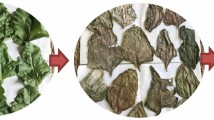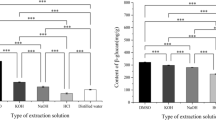Abstract
Summary: β-glucosidase activity from normal human cultured fibroblasts was not affected by the presence of up to 0.1% (w/v) (1.86 mM) purified sodium taurocholate. At concentrations greater than 0.1%, there was a gradual decrease in activity. Conversely, β-glucosidase activity from fibroblasts of three patients with juvenile onset Gaucher's disease was preferentially inhibited by the detergent at concentrations as low as 0.025% (0.46 mM). A 40% decrease in activity was observed at 0.1%. Crude sodium taurocholate was more potent in inhibiting β-glucosidase activity from both the normal and Gaucher fibroblasts. However, very high background fluorescence and inconsistent results were observed when different batches of the crude taurocholate from the same or different sources were used. Similarly, β-glucosidase activity from Gaucher splenic tissue homogenates, supernatant fluids (40,000 x g) and residue pellets was preferentially inhibited by purified sodium taurocholate. These findings indicate that the reliability and sensitivity of the enzyme assay for Gaucher's disease can be enhanced by determining β-glucosidase activity in both the absence and presence of purified sodium taurocholate, particularly when variant cases with relatively high residual enzyme activity are encountered. In contrast to the enzyme from fibroblasts and spleens, β-glucosidase activity from human placenta was markedly activated (> 300%) by the presence of 0.08% (1.49 mM) purified sodium taurocholate or 0.1 mM phosphatidyl serine, suggesting the presence of a predominate form of β-glucosidase, possibly glucocerebroside β-glucosidase, which is activated by the detergent. The apparent Michaelis constant (Km) for both the soluble and membranebound enzyme from normal fibroblasts was 1.6 ± 0.1 mM. Kms from a patient with severe juvenile Gaucher's disease and two other patients with milder manifestations were 0.8 ± 0.2 and 3.3 ± 0.3 mM, respectively.
Speculation: The observation that β-glucosidase activity from tissues of patients with juvenile onset forms of Gaucher's disease is preferentially inhibited by the detergent, sodium taurocholate, suggests that a structurally altered-β-glucosidase, which is more susceptible to inhibition by sodium taurocholate, is synthesized in patients with the disease. The severity of the disease could depend on the particular amino acid affected in the primary structure of the enzyme. An alternate explanation is the presence of at least two enzymes, which may or may not be isozymes, each capable of releasing glucose from the artificial fluorogenic substrate, but only one, which is deficient in Gaucher's disease, can hydrolyse the natural substrate and is unaffected by the presence of sodium taurocholate.
Similar content being viewed by others
Log in or create a free account to read this content
Gain free access to this article, as well as selected content from this journal and more on nature.com
or
Author information
Authors and Affiliations
Rights and permissions
About this article
Cite this article
Choy, F., Davidson, R. Gaucher's Disease II. Studies on the Kinetics of β-Glucosidase and the Effects of Sodium Taurocholate in Normal and Gaucher Tissues. Pediatr Res 14, 54–59 (1980). https://doi.org/10.1203/00006450-198001000-00013
Issue date:
DOI: https://doi.org/10.1203/00006450-198001000-00013



